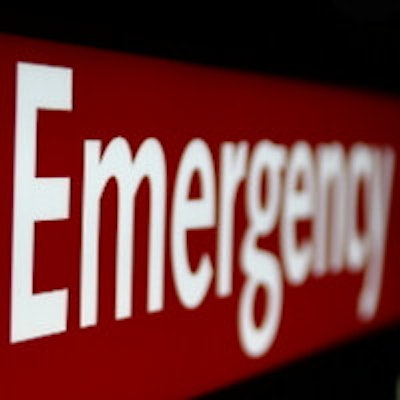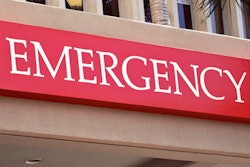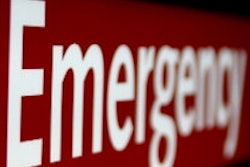
Emergency department (ED) visits for dental problems cost nearly $3 billion during the period from 2008 through 2010, according to a new study in the Journal of the American Dental Association (April 2014, Vol. 145:4, pp. 331-337). The majority of those seeking ED care for oral conditions are lower-income and without insurance, the study found.
This follows a 2013 ADA report that found that patients are resorting to emergency rooms (ER) in record numbers for dental treatment, straining the U.S. healthcare system and increasing healthcare costs.
And during a U.S. Senate hearing last fall, health officials and community workers described a national dental crisis that is causing pain and suffering to millions of children and adults, while wasting millions of dollars as underserved people turn to ERs for care.
This retrospective JADA analysis by American researchers investigated national trends in U.S. hospital-based ED visits involving dental conditions and patient-related characteristics associated with ED charges.
Background
During the study period, more than 382.8 million ED visits occurred in the U.S., including nearly 4.05 million (about 1%) patients with diagnosed dental conditions. A total of 101 of these dental patients died in the ED, and most of them (nearly 85%) did not have any other comorbid conditions, the researchers noted.
The analysis evaluated patients with dental caries, pulpal or periapical lesions, gingival and periodontal conditions, and mouth cellulitis or abscesses using data from the Nationwide Emergency Department Sample of the Healthcare Cost and Utilization Project, sponsored by the Agency for Healthcare Research and Quality.
Results
The majority (57%) of the ED visits were for dental caries problems, while mouth cellulitis or abscesses accounted for the least number (2.7%) of visits.
The mean age of the patients was 33, women were a slight majority (51%), and almost all of the patients (94%) were discharged after treatment. Only a few (4.3%) were admitted for treatment.
The majority (40.5%) of patients were uninsured, 38% had public insurance (30% Medicaid, 8% Medicare), 19% had private insurance, and most (92%) did not have comorbid conditions.
Most of the patients (71%) lived in low-income areas. The mean hospital ED charge for dental-related care was $760 per visit (adjusted to 2010 dollars), and total charges in the U.S. for such treatment during the three-year study period were $2.7 billion. Patients with mouth cellulitis, periodontal conditions, and high comorbid conditions had higher ED charges.
 Chart courtesy of the American Dental Association.
Chart courtesy of the American Dental Association.
Notably, patients covered by Medicare ($79.67 more) and private insurance ($81.66 more) had significantly higher ED charges than uninsured patients, according to the study authors.
Of the 101 patients who died, most were men (57%) who had dental caries (55%), pulp or periapical lesions (42.6%), gingival or periodontal conditions (17.4%), or mouth cellulitis or abscesses (23.3%). More than a quarter of those who died (26.6%) were uninsured, and a majority (76 patients, 75.2%) were poor.
Conclusion
The study noted that dental ED care costs more than regular care by oral health professional, while most ED visits only provide patients with pain medication and don't treat the underlying problem.
“Most of these dental conditions could be avoided altogether or minimized by periodic receipt of preventive oral healthcare, maintenance of good oral hygiene, and adoption of optimal dietary habits.”
"It should be noted that overall charges associated with treating dental emergencies are likely to be much more when one factors into the economic burden charges for care needed or provided after discharge from the ED, medication costs, and other indirect costs," the authors wrote. "Previous research has demonstrated that more than one-half of the patients who seek treatment for dental complaints at an ED simply received a prescription for medication and no other treatment, which could have left the underlying dental problem untreated" (British Dental Journal, December 2008, Vol. 205:12, pp. 659-664, 648; Journal of Evidence-Based Dental Practice, December 2010, Vol. 10:4, pp. 212-222).
A large proportion of the dental-related ED visits were either uninsured or covered by Medicaid, the study found, which was consistent with prior studies (J Evid Based Dent Pract, December 2010, Vol. 10:4, pp. 212-222; Annals of Emergency Medicine, July 2003, Vol. 42:1, pp. 93-99). And a majority (70%) of such patients lived in low-income areas.
"It is likely that these cohorts seek hospital-based settings for dental care because of a combination of factors, including progression of a dental lesion to a state severe enough to necessitate emergency or urgent care, lack of dental insurance that precluded them from seeking periodic dental care at dental offices, and geographical barriers to accessing dental clinics," the researchers noted.
"Most of these dental conditions could be avoided altogether or minimized by periodic receipt of preventive oral healthcare, maintenance of good oral hygiene, and adoption of optimal dietary habits," they concluded.
Recommendations
The problem of dental-related ED visits is complex, and solutions are not easy, the researchers noted. But they added that it would help to have oral health experts at hospitals who could consult with treating clinicians or handle the emergencies themselves. Also, hospitals could develop formal referral relationships with safety-net providers and dentists who treat Medicaid patients.
The study authors suggested increasing government funding for preventive and periodic oral healthcare, which could result in significant savings and better oral healthcare for people who resort to ED care for their dental problems.



















